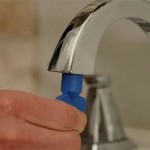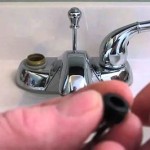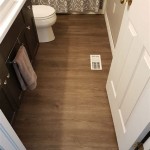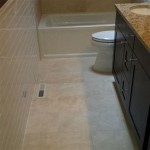How To Refurbish an Old Bathroom Vanity
An outdated bathroom vanity can significantly detract from the overall aesthetic of a bathroom. Rather than replacing the entire unit, refurbishing the existing vanity can be a cost-effective way to modernize the space and improve its functionality. The process involves careful planning, preparation, and execution, and can be adapted to suit various skill levels and budgets. This article outlines a comprehensive guide to refurbishing an old bathroom vanity, covering essential steps from initial assessment to final finishing.
Assessing the Vanity's Condition and Defining the Project Scope
The first step in refurbishing a bathroom vanity is a thorough assessment of its current condition. This evaluation will determine the scope of the project and the necessary materials and tools. Examine the vanity cabinet, countertop, and hardware for signs of damage, such as water stains, mold, rot, peeling veneer, or loose joints. Evaluate the functionality of the doors and drawers, noting any sticking, misalignment, or broken components.
Water damage is a primary concern, particularly around the sink and plumbing fixtures. Look for signs of swelling, discoloration, or softness in the wood, as this indicates water penetration. Mold or mildew growth should be addressed immediately with appropriate cleaning solutions and preventative measures taken to prevent recurrence. In cases of extensive rot, replacement of the affected components may be necessary.
Once the damage has been assessed, define the scope of the refurbishment project. Consider the desired outcome, such as a simple repaint or a more extensive overhaul involving new doors, hardware, or a countertop replacement. Establish a budget and timeline for the project, taking into account the cost of materials, tools, and labor if professional assistance is required. A clear understanding of the project scope will ensure a more efficient and successful refurbishment process.
Consider also the style of the existing vanity and the desired aesthetic of the bathroom. Are you aiming for a modern update, a traditional restoration, or a completely different look? Research different design options and gather inspiration from online resources, magazines, or showrooms. This will help you make informed decisions about paint colors, hardware styles, and countertop materials.
Preparation and Disassembly
Prior to starting any physical work, meticulous preparation is essential. Begin by protecting the surrounding area with drop cloths or plastic sheeting to prevent damage from dust, paint, or spills. Ensure adequate ventilation in the work area, especially when using chemicals like paint strippers or solvents.
The next step is to disassemble the vanity as much as possible. Remove the doors, drawers, hardware (knobs, pulls, hinges), and any detachable panels. Take photos of the assembly process to assist with reassembly later. Label each component clearly to avoid confusion. Store the removed items in a safe place to prevent damage or loss. Disconnect any plumbing fixtures, such as the sink and faucet, following proper safety precautions. Turn off the water supply to the bathroom before disconnecting any plumbing.
After disassembly, clean the vanity thoroughly to remove any dirt, grime, or old finishes. Use a mild detergent and water solution, followed by a thorough rinsing. For stubborn stains or grease, a specialized cleaner may be required. Allow the vanity to dry completely before proceeding to the next step. This ensures proper adhesion of any new finishes.
Inspect the disassembled components for any repairs that need to be made. Tighten loose joints with wood glue and clamps. Fill any holes or cracks with wood filler, allowing it to dry completely before sanding smooth. Address any structural issues before moving on to the finishing stages.
Surface Preparation and Finishing
Proper surface preparation is critical for achieving a smooth, durable, and aesthetically pleasing finish. This involves sanding, priming, and filling imperfections.
Sanding removes the old finish, smooths the surface, and provides a better surface for the new finish to adhere to. Use different grits of sandpaper, starting with a coarser grit (around 80-120) to remove the old finish and imperfections, and progressing to finer grits (around 220-320) to create a smooth surface. Sand with the grain of the wood to avoid scratching. A power sander can be used for larger surfaces, but hand sanding is recommended for intricate areas or delicate veneers. Remove all sanding dust with a tack cloth or vacuum cleaner.
Priming is essential for sealing porous surfaces, providing a uniform base for the paint, and improving its adhesion. Choose a primer that is compatible with the paint you will be using. Apply the primer in thin, even coats, following the manufacturer's instructions. Allow the primer to dry completely before sanding lightly with fine-grit sandpaper to create a smooth surface for the paint. Two coats of primer may be necessary for heavily stained or damaged surfaces.
Once the surface is properly prepared, the finishing process can begin. This typically involves painting or staining the vanity cabinet and applying a protective topcoat. Select a high-quality paint that is specifically designed for bathroom environments. Choose a paint color that complements the overall aesthetic of the bathroom. Apply the paint in thin, even coats, using a brush, roller, or sprayer. Allow each coat to dry completely before applying the next coat. Multiple coats are generally required for optimal coverage and durability. Consider using a paint with a moisture-resistant finish to protect the vanity from water damage.
If staining the vanity, select a stain color that enhances the natural grain of the wood. Apply the stain evenly with a brush or cloth, following the manufacturer's instructions. Allow the stain to penetrate the wood for the specified amount of time, then wipe off any excess stain. Apply a protective topcoat, such as polyurethane or varnish, to seal the stain and provide a durable finish. Multiple coats of topcoat may be necessary for optimal protection.
Consider replacing the countertop if it is damaged or outdated. There are various countertop materials available, including granite, quartz, marble, laminate, and solid surface. Choose a material that is durable, water-resistant, and complements the style of the bathroom. Measure the vanity accurately and have the countertop professionally installed or follow the manufacturer's instructions for DIY installation.
Reassembly and Final Touches
After the finishing process is complete, carefully reassemble the vanity, following the photos and labels created during disassembly. Reattach the doors, drawers, and hardware, ensuring that they are properly aligned and functioning smoothly. Tighten all screws and bolts securely.
Install the sink and faucet, connecting the plumbing lines according to local codes and manufacturer's instructions. Check for leaks and make any necessary adjustments. Apply caulk around the sink and countertop to prevent water damage.
Replace or upgrade the hardware, such as knobs, pulls, and hinges, to further enhance the aesthetic of the vanity. Choose hardware that complements the style of the bathroom and provides a cohesive look. Consider using new or vintage hardware to add a unique touch.
Add any final touches, such as decorative trim, molding, or lighting fixtures, to personalize the vanity and enhance its overall appearance. Consider adding under-cabinet lighting or accent lighting to create a more inviting atmosphere. Clean the vanity thoroughly and remove any debris or fingerprints.
Inspect the completed project carefully to ensure that all aspects are functioning properly and that the finish is smooth and consistent. Address any imperfections or issues that are identified. Enjoy the newly refurbished bathroom vanity and the updated look it brings to the space.

Raising A Bathroom Vanity Diy Oak Hill Home Solutions

How To Easily Make A Bathroom Countertop Taller Noting Grace

How Do I Raise A Bathroom Vanity Hometalk

How To Make A Vanity Taller And Deeper Craftivity Designs

How To Raise Up A Short Vanity Remodelaholic

Making A Bathroom Vanity Taller Hometalk

How To Easily Make A Bathroom Countertop Taller Noting Grace

How To Raise Up A Short Vanity Remodelaholic

How To Easily Make A Bathroom Countertop Taller Noting Grace

How To Make A Vanity Taller And Deeper Craftivity Designs
Related Posts







